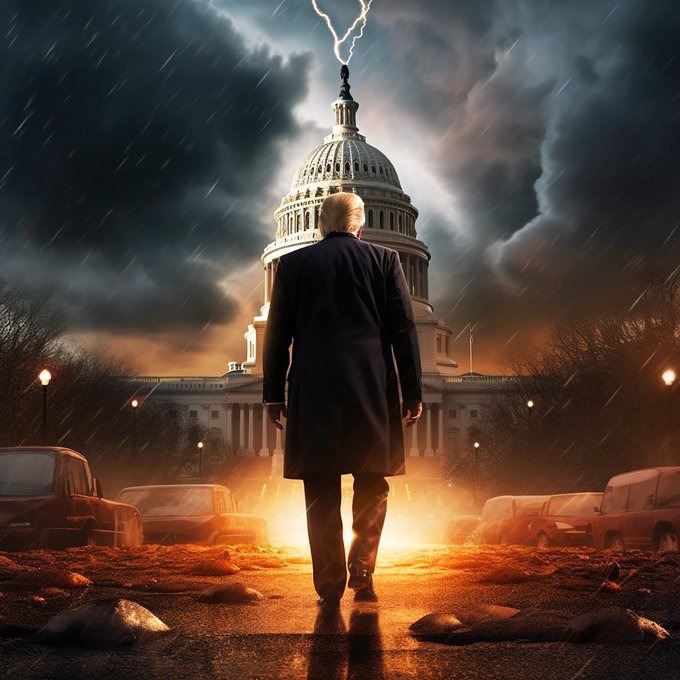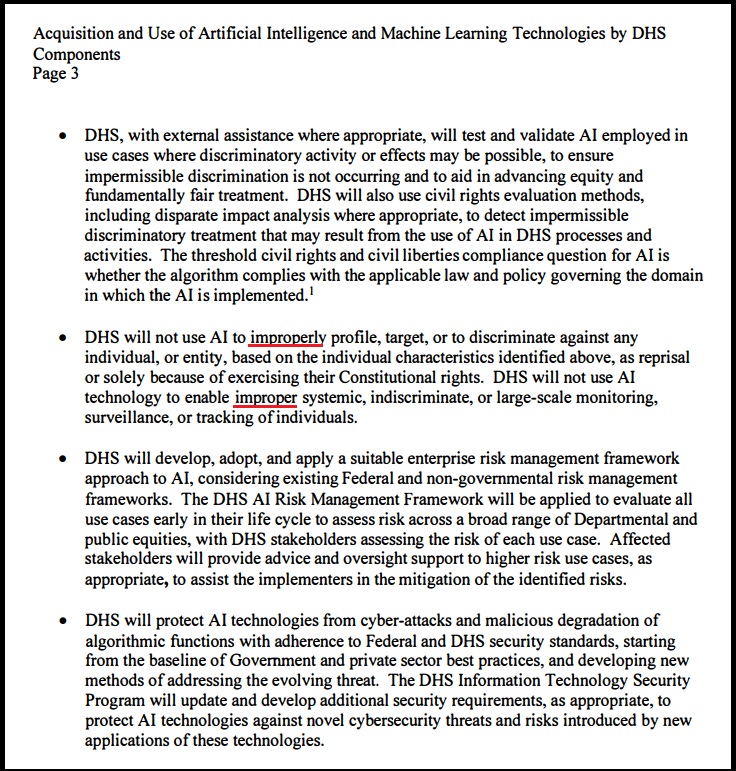![]()

by Sundance
Yesterday, we noted the warrant demand from Special Counsel Jack Smith to Twitter, that included the demand for all information on Donald Trump’s account that relates to his followers and supporters. {LINK} However, the element for this focus is the granular demand for user metadata, and the bigger picture for 2024.
Within the warrant:
The U.S. government requested and received the metadata for accounts connected to, and in alignment with, President Donald J. Trump.
That’s billions of billions of datapoints on millions of American citizens, their locations, their devices, their ip addresses and ultimately their real identities and connected activity as attributed to -and connected with- their connected social media accounts. Essentially, turning Donald J. Trump into the center of a surveillance virus.
People then say – how could the Jack Smith special counsel possibly comb through all of those users and all of that connected metadata? The answer is Artificial Intelligence; but the serious concern comes when you combine the metadata, AI organization and the previous announcements from DHS.
If you have followed my outlines on this issue [Category Here], you will note exactly where this latest Jack Smith development falls on the continuum. The 2024 election is right around the corner. Previously, I stated the artificial intelligence (AI) component to the internet surveillance system was going to launch toward the end of this year. Then DHS announced exactly that [SEE HERE].
I find it very interesting the DHS memo was issued on August 8th, but only published for the general public September 14th. July and August were when I first identified a new set of AI spider crawls underway as launched by Google. Pay very, very close attention to the two underlined words in the following paragraph:
Take out the word “improper” and the admission is, DHS uses AI to profile, target and discriminate. In the second sentence, DHS currently participates in systemic, indiscriminate and/or large-scale monitoring, surveillance, or tracking of individuals.
The only thing those sentences in the paragraph say, is that DHS will not allow AI to create improper outcomes within a system they outline that already exists.
Stop and reread that last sentence as much as needed. Inasmuch as this DHS guidance is telling us the rules for Homeland Security (DHS) and the Cybersecurity and Infrastructure Security Agency (CISA) as they use AI, they are also outlining what current processes of surveillance would be enhanced by it.
DHS’ AI task force is coordinating with the Cybersecurity and Infrastructure Security Agency on how the department can partner with critical infrastructure organizations “on safeguarding their uses of AI and strengthening their cybersecurity practices writ large to defend against evolving threats.”
What are those critical infrastructure organizations? They include voting systems. Who or what are those evolving threats? You!
Federal News Network – […] The report also recommends DHS encourage pursing off-the-shelf commercial solutions instead of “building everything in-house.”
Mayorkas emphasized the need for DHS to adopt AI quickly, regardless of whether it’s commercially acquired or internally developed technology.
“We have got to change the procurement capabilities of a government agency to actually move quickly and nimbly, so that when we’re dealing in a very dynamic environment, we can actually move with dynamism,” Mayorkas said. “I’m not suggesting moving to a sole source model, but we just have to be quick.”
He also stressed the need for DHS to prioritize where it will use AI, rather than attempting to adopt it across every mission and use case. The report points to combatting both fentanyl and human trafficking as use cases that could be “accelerated and championed” across DHS. But it also suggests DHS “integrate AI/ML into as many areas of the DHS mission as possible.”
“We’re going to need to prioritize what aspect of our mission should we really double down on to harness AI because I worry about diluting our focus too much,” Mayorkas said. “And I really do want to demonstrate, as quickly as is responsible, how this could really be a game changer for us in advancing our mission . . . we have to pick our spots here, in my view, somewhat surgically.” (more)
Notice the emphasis on speed. Get this AI system launched into DHS surveillance, tracking and monitoring systems as quickly as possible.
Now do you see my point about how radical and fast everything is going to change? It’s the 2024 election targeting.
Remember, the Dept of Defense (DoD) will now conduct online monitoring operations, using enhanced AI to protect the U.S. internet from “disinformation” under the auspices of national security. {link}
I share this information with you so that you understand what is being constructed and what is about to be deployed on a large scale.
Folks, I’m not crazy or a conspiracy theorist. We can all sense something is happening, just like we sensed it in the background of the 2016 election but didn’t know at the time how vast the DHS/Intel Community operation against Trump, the “six ways to Sunday,” was.
Put all of that metadata gathered by the DOJ together, with the AI operation from DHS, and then overlay the parameters and definitions. What you get is the targeting system to control the outcome of the 2024 election.
DHS’ AI task force is coordinating with the Cybersecurity and Infrastructure Security Agency on how the department can partner with critical infrastructure organizations “on safeguarding their uses of AI and strengthening their cybersecurity practices writ large to defend against evolving threats.”
Remember, in addition to these groups assembling, the Dept of Defense (DoD) will now conduct online monitoring operations, using enhanced AI to protect the U.S. internet from “disinformation” under the auspices of national security. {link} So, the question becomes, what was Chuck Schumer’s primary AI reference:




Conservatives were against FISA when UNIPARTY Ford signed it almost 50 years ago. We were right ! This validates conservative position to Ford.